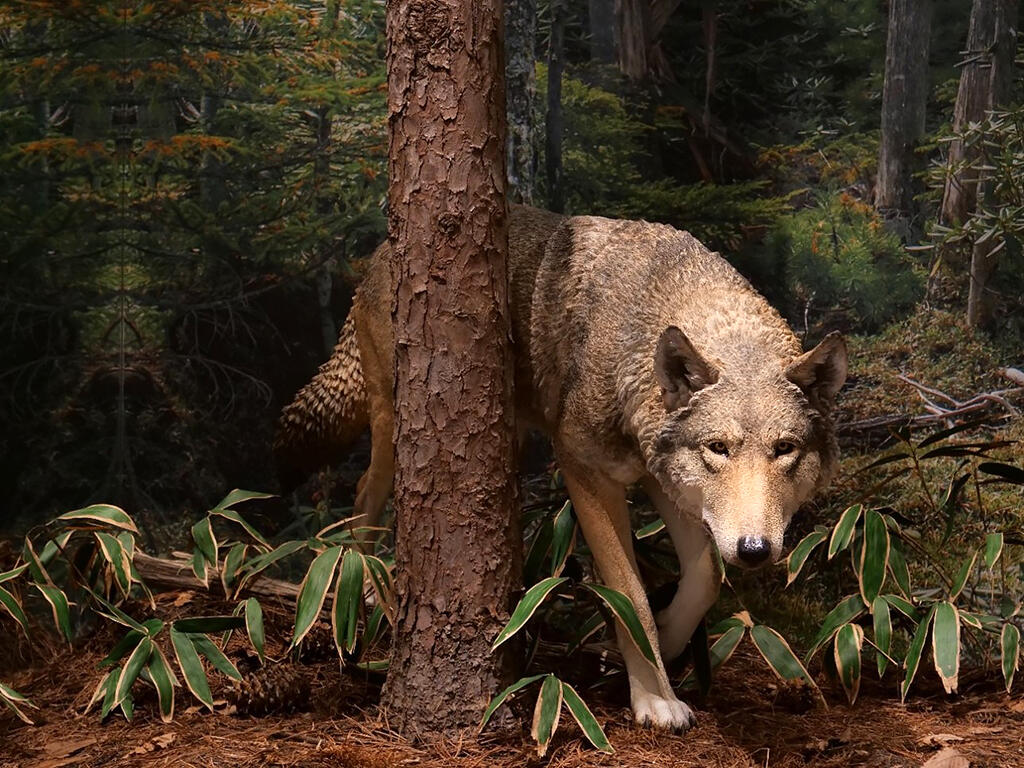A research group consisting of Yamanashi University, the National Museum of Nature and Science, Tokyo University of Agriculture, Tokyo Institute of Technology, the National Institute of Genetics, Yamagata University, the National Museum of Japanese History, and others has successfully analyzed genomic DNA and radiocarbon dated the fossils of wolves that lived in the Japanese archipelago. The results of the study overturned the conventional theory on the origin of Japanese wolves and revealed for the first time that an older lineage of large wolves, previously unknown, inhabited the Japanese archipelago during the Pleistocene period, and that the ancestors of Japanese wolves were formed by hybridization between an older lineage of wolves from the Pleistocene period and a new lineage that entered the Japanese Islands during the late Last Glacial Period.

(courtesy of Yuichiro Kudo, associate professor at Gakushuin Women's College).
The phylogenetic origin and genetic relationship between Japanese wolves, an endemic subspecies that once inhabited the Japanese archipelago, and the giant wolf, which lived until 20,000 years ago, were completely unknown. The research group collected samples from the inside of wolf fossil specimens from Sano City in Tochigi Prefecture, Japan, and conducted radiocarbon dating, measured the stable isotope ratios of carbon and nitrogen, and extracted DNA and sequenced it using a next-generation sequencer.
Radiocarbon dating revealed that the fossils were dated to 35,000 years ago (Late Pleistocene period) and 5,000 years ago (Holocene period). Analysis of the stable isotope ratios showed that the 35,000-year-old Pleistocene wolf had higher carbon and nitrogen stable isotope ratios than the 5,000-year-old Japanese wolf, suggesting that the giant Pleistocene wolf was a stronger carnivore than the Japanese wolf and preyed on large herbivorous mammals.
The research group also conducted a phylogenetic analysis of mitochondrial DNA information obtained from the large Pleistocene wolves. Previously, it was recognized that only one subspecies of the extinct Japanese wolf lived in Honshu, Shikoku, and Kyushu, but the Pleistocene wolf is a completely different lineage from the known Japanese wolves, and it was shown to have diverged earlier than the modern wolf lineages.
To further investigate the history of wolf populations in more detail, nuclear genome sequences of the 5,000-year-old Japanese wolves and the Pleistocene wolves were analyzed together with those of present-day wolves and of the extinct Pleistocene continental wolves. As a result, solid evidence was found that Japanese wolves were established through genetic contributions from both Japanese Pleistocene wolves and continental wolves. In other words, the modern Japanese wolf was established as a result of the migration of continental wolves, and interpopulation hybridization.
According to Senior Assistant Professor Takahiro Segawa of the University of Yamanashi, "Before the Late Pleistocene period (more than 12,000 years ago), the Japanese archipelago was home to a variety of large mammals, including the Naumann elephant, giant deer, elk, tigers, brown bears, and bison. Little is known about their phylogenetic origins, when and how they arrived, or why they became extinct in the Japanese archipelago. This mystery is an important issue in understanding the history of land bridge formation between the Japanese archipelago and the continent during the ice age, as well as the relationship between large mammals and the ancestors of the Japanese people. In the future, we would like to bring to light the evolutionary history of the mammalian fauna in the Japanese Islands using ancient DNA analysis techniques established in our research."
This article has been translated by JST with permission from The Science News Ltd.(https://sci-news.co.jp/). Unauthorized reproduction of the article and photographs is prohibited.




